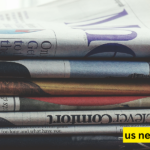In a world where visuals reign supreme, the ability to dissect and understand images has become more crucial than ever. Enter Basdalm Separation—a groundbreaking concept that takes image analysis to new heights. But what exactly is it? Imagine peeling back the layers of an image like you would an onion, revealing its core components and hidden intricacies. In this blog post, we’ll journey into the fascinating realm of image deconstruction, exploring how Basdalm Separation works and why it’s reshaping our understanding of visual data. Whether you’re a tech enthusiast, a creative professional, or simply curious about the science behind your favorite photos and graphics, get ready to uncover the secrets lurking beneath the surface!
Introduction to Basdalm Separation
Have you ever wondered how images are transformed from vibrant visuals into distinct components? Enter the world of basdalm separation. This intriguing process takes image deconstruction to a whole new level, revealing the hidden intricacies behind color and composition. Whether you’re a graphic designer, photographer, or just someone fascinated by art and technology, understanding basdalm separation is essential in today’s visually-driven landscape.
As we dive deeper into this fascinating topic, you’ll discover the science that powers this technique. From unraveling color channels to exploring various separation methods used across industries, we’ll guide you through each step of the journey. So buckle up and get ready to unlock the secrets of image manipulation like never before!
The Science Behind Image Deconstruction
Image deconstruction is a fascinating process that hinges on understanding color channels. Each channel represents a component of the overall image, allowing for targeted manipulation.
In most digital images, colors are formed using the RGB (Red, Green, Blue) model. This additive method combines these primary colors in varying intensities to create a spectrum of hues.
On the other hand, CMYK (Cyan, Magenta, Yellow, Key/Black) operates differently. It utilizes subtractive mixing and is essential for printing purposes. Each model delivers distinct results based on its application—RGB shines in screens while CMYK excels in print media.
Grasping these concepts lays the groundwork for effective basdalm separation on images. By dissecting an image into its components, artists can work with precision and creativity to achieve their desired visual effects.
Explaining color channels and their role in basdalm separation
Color channels are fundamental to understanding basdalm separation on images. Each channel represents a primary color in a specific model, like RGB or CMYK. These colors blend together to create the full spectrum we see.
In the RGB model, red, green, and blue combine at varying intensities to form other colors. This additive process is essential for digital displays. Here, basdalm separation isolates these channels for precise editing.
Conversely, the CMYK model uses cyan, magenta, yellow, and black ink in printing processes. It operates through subtraction; layering inks absorbs light to produce different shades. Understanding how these channels function assists designers in achieving accurate separations.
By manipulating individual color channels during basdalm separation, artists can enhance image quality or make adjustments that would otherwise be impossible with standard editing techniques. This deepens creative possibilities while maintaining fidelity to original artwork.
Understanding the RGB and CMYK color models
The RGB and CMYK color models are fundamental to understanding how colors interact in digital and print media.
RGB, which stands for Red, Green, and Blue, is an additive color model primarily used in screens. When you mix these three colors at full intensity, they create white light. This makes it essential for web design and any application that relies on displays.
CMYK represents Cyan, Magenta, Yellow, and Key (Black). It’s a subtractive color model utilized in printing processes. By layering these inks on paper, different hues emerge through the absorption of light. Unlike RGB’s brightness from mixing lights together, CMYK works by absorbing various wavelengths.
Each model serves its purpose effectively but can lead to discrepancies when translating designs from screen to print due to their inherent differences in representation. Understanding these distinctions is crucial for achieving accurate results across mediums.
Techniques for Basdalm Separation
Basdalm separation on images employs various techniques to achieve distinct visual outcomes. Each method caters to different needs and scenarios, making it essential for designers and artists to choose wisely.
Spot color separation is one of the most straightforward approaches. It isolates specific colors in an image, allowing for precise control over each hue. This technique excels in print applications where brand colors must remain consistent.
Simulated process color separation offers a more dynamic alternative. By blending primary colors, it creates the illusion of depth and detail. However, this approach can sometimes introduce challenges with accuracy, especially when the original image features intricate gradients.
Index color separation stands out by limiting the palette used in an image to a specific number of colors. While this technique can enhance file efficiency and reduce processing time, its restrictive nature may not suit all projects or artistic visions.
Spot Color Separation: How it works and its applications
Spot color separation is a technique used to isolate specific colors in an image for printing. Unlike process colors that blend in layers, spot colors are pure and pre-mixed inks. This method ensures vibrant and accurate reproduction on printed materials.
When working with spot colors, designers typically refer to systems like Pantone. These standardized color swatches provide a precise way to match hues across different mediums. By isolating these shades during the separation process, printers can achieve consistency from one print run to another.
Applications of spot color separation are vast. It’s commonly employed in branding projects where exact brand colors must be maintained. Additionally, it shines in packaging design, where visual impact is crucial and requires striking color fidelity without compromise.
This technique offers advantages in specialty printing jobs as well, such as metallic or fluorescent inks that wouldn’t mix well with traditional processes.
Simulated Process Color Separation: Pros and cons
Simulated process color separation is a technique that mimics the look of continuous-tone images using halftone dots. It’s particularly favored in screen printing and digital media for its ability to reproduce vibrant colors.
One major advantage is flexibility. This method allows designers to combine spot colors with process colors, creating a wider palette without sacrificing quality. It’s also quite useful when working with complex gradients or intricate designs.
However, there are downsides to consider. Achieving accurate color reproduction can be challenging, especially if you’re not familiar with how ink behaves on various materials. Moreover, some printers may struggle with dot gain and other issues during output.
While simulated process color separation can deliver stunning results, it requires careful planning and testing to avoid pitfalls that could lead to unsatisfactory prints.
Index Color Separation: Benefits and limitations
Index color separation is an intriguing method that simplifies image colors into a limited palette. This approach often uses 256 or fewer distinct colors, making it ideal for specific applications like digital art and retro video games.
One of the main benefits of index color separation is file size reduction. With fewer colors to manage, images become lighter, allowing for faster loading times and easier storage. It’s perfect for screen displays where bandwidth might be a concern.
However, there are limitations to consider. The reduced color palette can lead to loss of detail and fidelity in more complex images. Subtle gradients may suffer as well, resulting in banding rather than smooth transitions.
While effective in certain scenarios, it’s essential to assess whether this technique aligns with your project’s goals before implementation. Understanding these nuances helps you make informed decisions when working on creative projects involving basdalm separation on images.
Examples of Basdalm Separation in Action
Basdalm separation plays a vital role across various creative fields. In graphic design, artists often use this technique to create visually striking assets that stand out. By isolating colors and elements, designers can manipulate images for unique effects.
In the photography realm, basdalm separation enhances image quality during editing. Photographers can adjust individual color channels to achieve desired contrast and saturation without compromising other elements.
The printing industry benefits significantly from this process as well. Accurate color separations ensure that printed materials reflect the original digital designs faithfully. This precision is crucial for branding consistency and high-quality outputs.
Whether it’s a vivid poster or an intricate photo book, basdalm separation elevates visual storytelling by allowing creators to push their artistic boundaries while maintaining control over every detail in their work.
Using basdalm separation in graphic design
Graphic design thrives on creativity and color. Basdalm separation enhances this by allowing designers to manipulate images at a granular level.
By breaking down an image into its individual color components, artists can fine-tune each element. This leads to vibrant visuals that stand out in any medium. Designers use basdalm separation to create striking logos, eye-catching posters, and stunning web graphics.
One popular application is the ability to adjust specific colors without affecting the entire image. This precision allows for tailored designs that resonate with target audiences.
Moreover, using basdalm separation helps in maintaining consistency across various platforms. Whether it’s print or digital media, designers ensure their vision remains intact through careful adjustments.
Ultimately, the flexibility offered by basdalm separation opens new doors for innovation in graphic design projects. It empowers creators to push boundaries and elevate their work beyond traditional limitations.
Applications in photography and printing industry
Basdalm separation plays a crucial role in enhancing photography and printing. Photographers use this technique to manipulate images, ensuring that every detail shines through. By isolating colors, they can adjust hues and saturation with precision.
In the printing industry, basdalm separation is essential for achieving vibrant results. It allows printers to separate colors into distinct layers before applying them one by one. This method guarantees accurate color reproduction on various materials.
Additionally, designers leverage basdalm separation to create striking visuals that stand out in marketing campaigns. The ability to control each color channel enhances brand identity across different platforms.
Whether it’s an artful photograph or a commercial poster, understanding how to apply basdalm separation ensures high-quality output tailored for the target audience’s needs.
Tips for Achieving Successful Basdalm Separation
Choosing the right software is crucial for achieving successful basdalm separation on images. Programs like Adobe Photoshop and CorelDRAW offer powerful tools tailored for this task. Familiarizing yourself with their features can significantly enhance your workflow.
Preparation is key. Always start with high-resolution images to ensure quality results. Low-quality files may lead to disappointing separations, making adjustments challenging.
Be mindful of color accuracy during the separation process. Use a calibrated monitor to see the true colors as you work on your designs. This attention to detail helps maintain consistency across various outputs.
Lastly, don’t hesitate to experiment with different techniques and settings. Each image has its unique characteristics, so exploring options can yield better results tailored specifically for your project needs.
Choosing the right software and tools
Selecting the right software is crucial for effective basdalm separation. Various tools cater to different needs, so understanding your specific requirements is key.
Adobe Photoshop remains a popular choice for image deconstruction. Its robust features allow users to manipulate color channels with precision. You can easily separate images into RGB or CMYK, making it versatile for various projects.
For those who prefer open-source options, GIMP offers powerful capabilities without the price tag. It supports complex layer management and custom plugins that enhance functionality.
Illustrator also excels in basdalm separation, especially when dealing with vector graphics. Its spot color functionalities make it a go-to for designers aiming for high-quality results.
Don’t overlook specialized software like CorelDRAW or Affinity Photo either; each has unique strengths tailored to specific design workflows. Choosing wisely can elevate your visual projects significantly.
Best practices for preparing
Achieving successful basdalm separation on images requires careful planning and execution. Start by selecting the right software that caters to your specific needs. Programs like Adobe Photoshop or CorelDRAW are popular choices among professionals for their advanced features and flexibility.
Preparation is key when working with image files. Ensure you’re starting with high-resolution images, as this will significantly enhance the quality of your output. Clean up any unwanted elements from your image beforehand; this will help streamline the separation process.
When setting up your color channels, take time to understand how each channel impacts the final result. It’s crucial to manage and adjust these channels appropriately before proceeding with any techniques for separation.
Keep a consistent workflow throughout your project by creating templates or presets based on previous successes. This practice can save valuable time and maintain uniformity across different projects.
Lastly, always test print before committing to large runs in printing jobs. This step allows you to verify colors align correctly after separation, ensuring a polished end product that meets expectations. By following these best practices, you’ll be well-equipped to master basdalm separation on images effectively.






